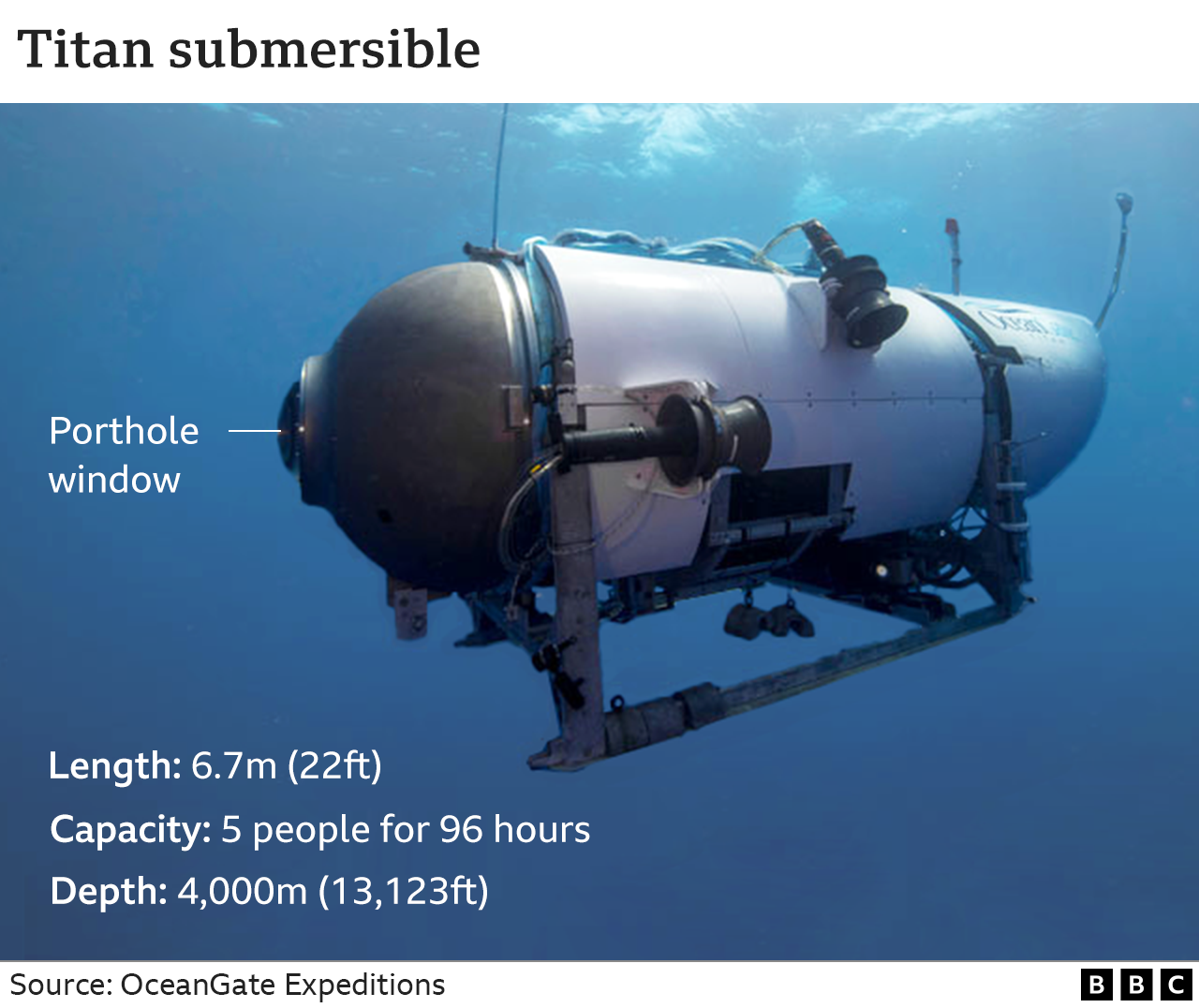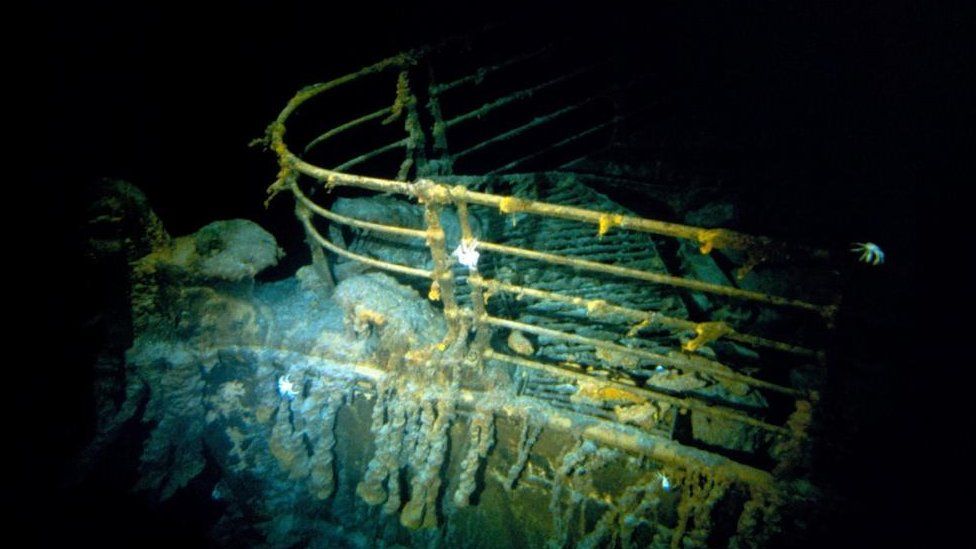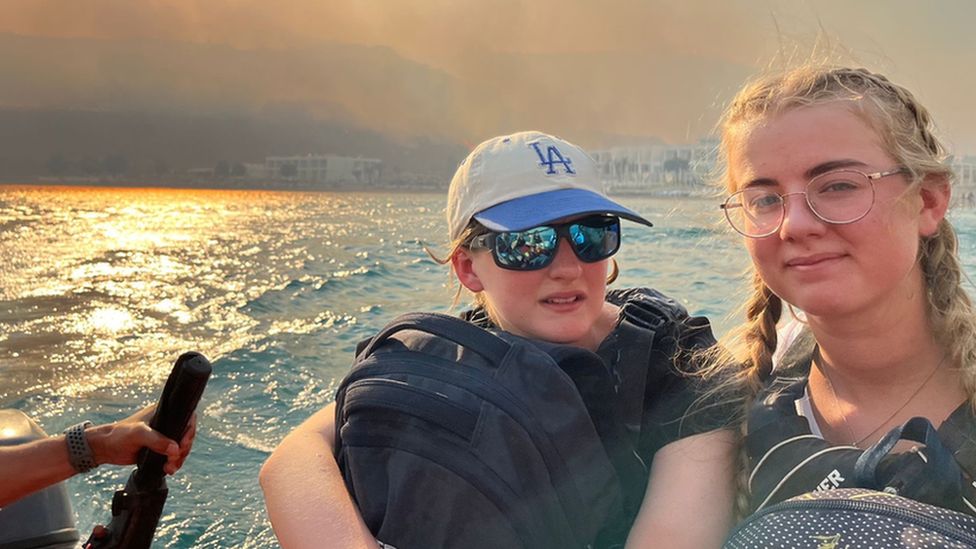The search for a tourist submarine that vanished on Sunday during a dive to the Titanic's wreck is a race against time for US and Canadian search teams.
Approximately one hour and forty-five minutes into the dive, contact with the small sub was lost. There were five people on board.
While the rescue effort is still underway in the middle of the Atlantic Ocean, the ship has not yet been located.
The rescue effort is being supported by governmental organizations, the navies of both nations, and commercial deep-sea companies.
The crew members were believed to have about four days' worth of oxygen left as of Monday afternoon. Hamish Harding, a British billionaire businessman and explorer, is one of them.
At a press conference, US Coast Guard Rear Adm John Mauger stated, "Right now, our focus is getting on as much capability into the area as we can.
So far, the search for the ship has involved the use of military aircraft, a submarine, and sonar buoys.
Although the rescue effort is being managed from Boston, Massachusetts, the Titanic's wreck is located about 435 miles (700 km) south of St. John's, Newfoundland.
The Polar Prince research ship, according to the US Coast Guard, carried out a surface search for the sub on Monday night. It serves as a submersible transporter and served as the support ship for the tourist expedition on Sunday.
The Titan submersible, which CBS journalist David Pogue traveled in last year to reach the Titanic wreckage, is thought to be the missing vessel, according to tour company OceanGate.
He told the BBC that they can communicate by sending each other brief text messages when the support ship is directly above the sub.
Otherwise, communication is impossible due to the fact that underwater GPS and radio systems are inoperable.
According to Pogue, those aboard the sub are also unable to leave on their own because bolts fastened from the outside have sealed the interior.

The search area, according to Rear Adm Mauger, is "remote," which makes operations challenging.
Additionally, because light cannot travel very far below the water's surface, visibility is quickly lost.
Only the Titan can dive deep enough to reach the Titanic wreckage, according to a list of three submersibles on the OceanGate website.
According to the website, the ship can reach depths of up to 13,100 feet and weighs 23,000 lbs (10,432 kg).
An eight-day trip with dives to the wreck at a depth of 3,800m (12,500ft) costs $250,000 (£195,000) in tickets.

On social media over the weekend, Mr. Harding posted that he was "proud to finally announce" that he would be traveling with the team to the Titanic wreck, but he also noted that due to the "worst winter in Newfoundland in 40 years," this mission was likely to be the first and last manned mission to the Titanic in 2023.
In a subsequent message, he stated: "A weather window has just opened, and we are going to try a dive tomorrow. ".
However, OceanGate claimed that its "entirely focused [was] on the crewmembers in the submersible and their families" despite having "been unable to establish communications with one of our submersible exploration vehicles.".
We are extremely grateful for all of the help we have received from various government organizations and deep sea companies in our attempts to re-establish contact with the submersible, the statement continued.
A "chance to step outside of everyday life and discover something truly extraordinary," is how the company describes the eight-day trip on its carbon-fibre submersible.
It departs from St. John's, Newfoundland, and each complete dive to the wreck, including the descent and ascent, is said to take eight hours.
Two more expeditions have been scheduled for June 2024, and one is currently underway, according to the website.
The Titanic, the biggest ship at the time, collided with an iceberg while making its maiden voyage from Southampton to New York in 1912. More than 1,500 people died out of the 2,200 passengers and crew on board.
Since it was found in 1985, the wreckage has undergone extensive exploration.
The broken ship is surrounded by a massive debris field. The wreck is divided into two parts, with the bow and stern being 2,600 feet apart.
Deep-sea mapping was used last month to produce the wreck's first full-sized digital scan. The scan depicts the ship's size as well as some minor specifics, like the serial number on one of the propellers.
If you are willing to speak with a journalist from the BBC, kindly include a phone number. There are additional ways to contact us:.







